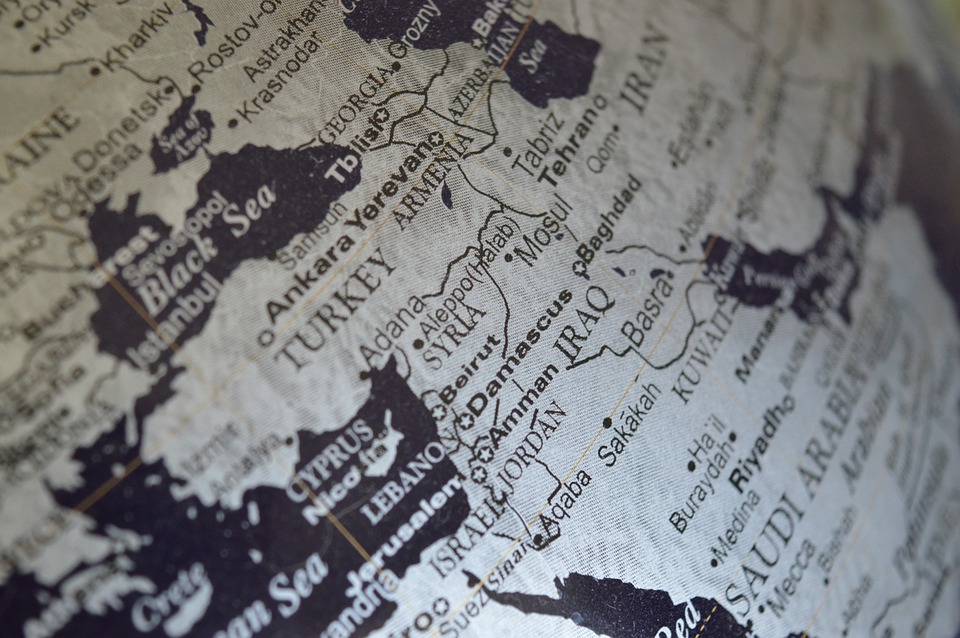The EU Energy Crisis and the EastMed project: Background and prospects

Share this Post
The Russia-Ukraine war severely threatens the European Union’s energy security and energy transition. The Russian natural gas represents more than 40% of the total gas consumption of the EU. Despite the sanctions against Kremlin, natural gas is still flowing from Russia, and meanwhile, its price is becoming unsustainable for the EU Members’ economies. The increasing fear is that the EU’s high demand for gas may be subsidizing the Russian military actions in Ukraine. Thus, the EU is preparing for energy crisis scenarios and organizing actions to phase out dependence on Russian oil and gas in the short term. Indeed, the EU plans to reduce the imports of Russian gas by two-thirds by 2023.
Under these circumstances, the Eastern Mediterranean natural gas resources are obtaining new significance, such that projects focused on the region might speedily proceed after years of stalling. This could be the case, for example, for the Eastern Mediterranean (EastMed) pipeline project. EastMed is a 1,900-kilometer undersea pipeline project transporting natural gas from Israel and Cyprus to Greece and Italy and on to Europe. The moment seems to be right for this ambitious project for a new chance at success after facing struggles to progress for technical and commercial reasons and after losing US support.
At the end of 2021, the EastMed pipeline project was included on the latest EU list of Projects of Common Interest (PCI). This means that EastMed still attracts interest as a cross-border infrastructure project. The trans-European Networks for Energy (TEN-E) Regulation provisionally agreed upon in December 2021 is another factor that may help advance the completion of Greece, Cyprus, and Israel’s EastMed pipeline. The TEN-E accords support Malta and Cyprus projects that have already been granted with Project of Common Interest status and that will secure those countries’ permanent interconnection to the trans-European gas network. As a result of all of the above, EastMed might develop the Southern Gas Corridor, a priority for the EU, and bring new gas from the East Mediterranean gas reserves as an alternative to Russian gas.
In addition to the above, EU Commission is moving efforts to rapidly diversify its basket of energy providers and considering alternative options to Russian gas to Europe to increase the energy system’s resilience.
On March 8, 2022, the EU Commission presented the REPowerEU plan, which is based on two pillars:
- Diversifying gas supplies via higher LNG imports and pipeline imports from non-Russian suppliers and higher levels of biomethane and hydrogen.
- Accelerating the pace of reducing the dependence on fossil fuels, boosting energy efficiency, increasing the share of renewables in overall electricity generation, and addressing infrastructure issues.
As part of this effort, EU Countries are currently looking to increase LNG imports and buy gas from other European members. Norway is the second-largest gas supplier after Russia but already operates at maximum capacity. Although the US is an LNG exporter to the EU, President Biden recently declared that he is reluctant to export LNG due to climate concerns. Thus, EU countries are considering other alternatives. For example, Germany is looking to import from Qatar, while Italy has already agreed to increase gas supplies from Algeria through the Trans-Mediterranean pipeline and is also looking to Congo and Angola as supplementary sources. Additionally, Italy is ready to resume a plan for an LNG terminal in Sicily. At the same time, Azerbaijan, though the Trans-Adriatic pipeline (TAP) that came into operation in 2020, is seeing increasing its importance as new strategic supplier of natural gas for Europe. The EU is also looking to Egypt for LNG. According to Egyptian data, Egypt exported a record quantity of LNG to Europe in 2021. Since Egypt imports gas from Israel via the Arish-Ashkelon pipeline and produces LNG, Israel is also part of the LNG supply, opening new options for Leviathan.
All the agreements for non-Russian gas imports will determine the amount of gas (including LNG) that will be available to the EU region in the near future. The burning question is whether gas exporters will be able to supply the quantities required by the EU to cover the gap left by the absence of Russian gas. Achieving this goal will probably require the development of new infrastructure. This is where the EastMed comes in.
The EastMed relies on political support at a given point in order to move ahead, but overall, it is a multi-year extensive commitment for the EU, and for this reason, the economic feasibility of EastMed project must fit in with the EU’s decarbonization goals and future gas demand.
The European Union has translated the goal of the Paris Agreement into a long-term strategy, in the form of the European Green Deal approved in 2020. The EU is working on implementing comprehensive legislative proposals, such as the Fit for 55 Package launched in July 2021, in order to accommodate this strategy. This package aims to provide climate, energy, transport, and taxation policies to reduce greenhouse gas (GHG) emissions by 55% by 2030, providing an energy mix that is sufficiently dynamic to meet the 2050 goal of climate neutrality. In the Paris-aligned scenario, natural gas will continue to play an essential role until 2030, at which point the EU plans to reduce the quantities in the years leading up to 2050. According to the projections, natural gas will represent only 22% of gross inland energy consumption in 2030 and 9% in 2050, after which, the use of natural gas will be stopped entirely.
The countries involved in the EastMed project intend to reach a final investment decision by 2022 and to complete the project by 2025, with private investors playing a key role. At the same time, since Europe’s natural gas consumption is expected to diminish considerably by this decade, a profit risk for investors is anticipated, which further be exacerbated by EU plans to boost energy efficiency to further decrease energy demand in the coming years. These longer-term goals, though they are at odds with investment in natural gas, are vital. After all, energy efficiency, sustainable energy consumption, and renewable energy technologies directly contribute to EU energy independence and climate goals (reducing CO2 emissions), while bringing gas from new reserves (i.e., diversifying the basket of gas providers) only fits the energy security imperative, as a means of secure flux of energy sources into EU.
Through the Fit for 55 Package, EU energy policy indicates that alternative low-carbon fuels will progressively replace natural gas. Thus, the EU budget will avoid projects focused solely on gas and oil but promote infrastructure that supports transport of alternative fuels , such as hydrogen and biomethane, such as hydrogen and biomethane. In addition, the REPowerEU plan presented a few days ago centers on “reducing the dependence on fossil fuels faster.” All of these further add risk to natural gas investors.
Therefore, in light of the EU energy policy, the future of the EastMed project is still open but uncertain, and not least given the absence of a strategy for the pipeline’s development in line with the EU’s long-term climate objectives.
This Analysis is published in the framework of the European-Israeli Forum for Environment and Sustainability, a joint initiative by the Israel Public Policy Institute (IPPI) and the Heinrich Böll Stiftung Tel Aviv.
The opinions expressed in this text are solely that of the author/s and do not necessarily reflect the views of the Israel Public Policy Institute (IPPI) and/or the Heinrich Böll Stiftung Tel Aviv.
Share this Post

Flying high? Unmanned aircraft and the future of transportation
Unmanned aerial vehicles (UAV) and unmanned aircraft systems (UAS), commonly termed ‘drones’, have the potential to become some…

On the Added Value of Big Data for Public Policy: Ex-ante AI Regulation
On the Added Value of ‘Big Data’ for Public Policy – and why it is ok to have…

Deepfakes: Manipulation on Demand?
This paper examines the rapid evolution and growing societal impact of deepfakes—hyperrealistic, synthetic, or manipulated audiovisual media created…
